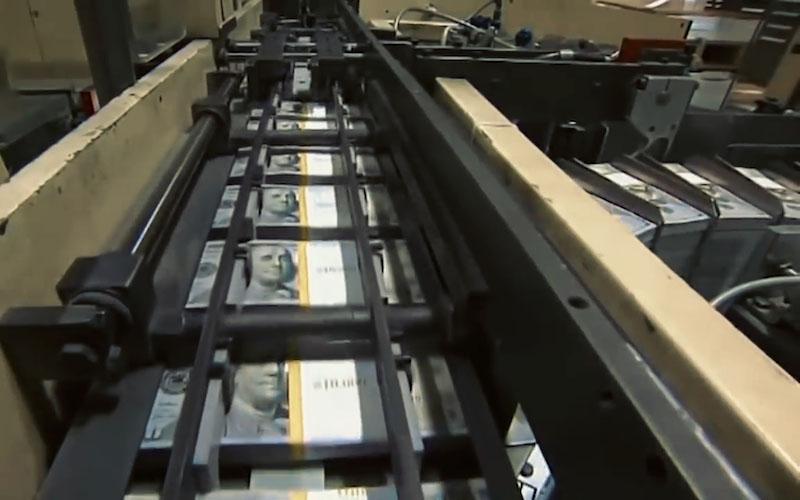Trump imposes 25% tariffs on Indian goods: US-India trade war escalates
2025-08-07 01:00:33

US-India trade dispute escalates: Expert view
Wendy Cutler, Vice President of the Asia Society Policy Institute: Unfortunately, the US-India dispute continues to escalate, with the president now threatening a 25% tariff. This would cut off most Indian exports to the US. With the bilateral relationship shifting so rapidly, neither side can afford to erode. Beijing is likely to welcome these developments and may take some modest steps to improve relations with India. Now is the time for US and Indian officials to resolve their differences privately.
Brian Jacobsen, chief economist at ANNEX Wealth Management in Wisconsin, said: "The additional 25% tariff on Indian imports may be more symbolic than substantial. The tariff will not take effect for 21 days, which provides a fairly wide window for exports. Furthermore, with numerous exceptions, it may be easier to specify which goods will be subject to the tariff than which will be exempted. This may explain the muted market reaction to the announcement."
India's export ecosystem under pressure
Colin Shah, Managing Director of KAMA JEWELRY: "The imposition of a 25% tariff on top of existing tariffs is regrettable and will deal a significant blow to India's overall export ecosystem, particularly the gem and jewelry industry. This will lead to a significant increase in export tariffs on inlaid gold jewelry from India, resulting in a further significant decline in jewelry exports to the United States, one of India's largest consumer markets."
A. Prasanna, Chief Economist at ICICI Securities, a primary dealer in Mumbai: "The additional tariff will take effect in 21 days, but it will be based on the previous 25% rate, so a total of 50% will have a significant negative impact on Indian exports. However, some key industries, such as electronics and pharmaceuticals, will continue to be exempt from the additional tariff. When the tariff reaches 50%, many Indian exports will face obstacles compared to countries with tariffs in the 15-30% range."
Economists warn: India's GDP growth faces downside risks
SAKSHI GUPTA, Chief Economist, HDFC Bank: While Trump's executive order provides an additional 21 days to reach a breakthrough, if no agreement is reached, we will be forced to significantly revise down our GDP growth forecast for fiscal 2026 to below 6%, which would result in a 40-50 basis point impact. This would be double our previous estimate of the impact of tariff increases on GDP.
Teresa John, chief economist at NIRMAL BANK INSTITUTIONAL EQUITIES in Mumbai: India is under pressure to reach a trade agreement. India may agree to significantly reduce purchases from Russia in stages and turn to other sources.
GAURASENGUPTA, Economist at IDFC First Bank, Mumbai: "With the issuance of this executive order, bilateral tariffs will rise to 50%, the highest tariffs in effect since August. This undoubtedly increases the downside risks to the 2025-26 GDP forecast. Currently, if tariffs remain in place until March 2026, the overall downside risk is estimated at 0.3% to 0.4%.
The impact on India's economy is limited, but caution is needed
MANOJMISHRA, Partner, Grant Thornton Bharat, New Delhi: India's merchandise exports to the US were estimated at $87 billion in fiscal year 2025, representing only about 2% of India's GDP and a modest proportion of the overall economy. While significant, the impact is unlikely to be severe. This development underscores the need to diversify export markets, reduce dependence on a single trading partner, and leverage India's expanding network of free trade agreements to build long-term trade resilience and sustain export growth.
Mayuresh Joshi, Head of India Equity Research at William O'Neil: While the market has begun to price in the risk of a significant tariff increase, a knee-jerk reaction in the short term is inevitable unless there is rapid clarity or a breakthrough in negotiations. India's crude oil imports have always been diversified—we source not only from Russia but also from countries like the United States. Russia represents only a small portion of our crude oil sourcing. Therefore, structurally, I don't expect a significant impact on Reliance Industries or overseas market managers (OMCs). That said, overall market sentiment—particularly in export-oriented sectors—could be impacted in the short term.
India responds strongly: safeguarding national interests
The Indian government quickly responded to Trump's tariff decision, issuing a statement saying: "The United States has recently targeted India's oil imports from Russia. We have made our position clear on these issues, including that our imports are based on market factors and the overall goal is to ensure energy security for India's 1.4 billion people. It is therefore extremely regrettable that the United States has chosen to impose additional tariffs on India for actions taken by India and other countries in their national interests. We reiterate that these actions are unfair, unreasonable and without justification. India will take all necessary actions to safeguard its national interests."
Trump's "kill two birds with one stone" strategy
Analysts at the financial website Forexlive noted that Trump intends to impose an additional 25% tariff on goods imported from India, effective August 27th. This move is intended solely to punish India for continuing to purchase Russian oil despite US pressure. The US tariffs come as Washington seeks to increase economic pressure on Russia and push for an end to the conflict in Ukraine, with further sanctions expected. By singling out India, Trump intends to make it a high-profile example of the potential consequences of purchasing Russian oil and other potentially sanctioned goods. Beyond punishment, this strategy also has a clear economic objective. Trump hopes to divert more goods to the US market while increasing US oil exports to India. In his view, this will both reduce India's dependence on Russian energy and strengthen the US trade position.
Trade war shock: Indian exports at risk
The Financial Times reported that economists warned that Trump's tariffs would deal a devastating blow to Indian exports. "Under such nasty tariffs, trade between the two countries is effectively dead," said Madhavi Arora, an economist at Emkay Global. Elara Securities economist Garima Kapur added, "At this rate, (India's) exports to the US are becoming unsustainable. Clearly, the risks to India's economic growth and exports are rising, the rupee may face renewed pressure, and calls for (India's) fiscal support may intensify."
Conclusion: Where is the US-India relationship heading?
Trump's decision to impose a 25% tariff on Indian goods has not only further strained US-India trade relations but also created new uncertainties for the Indian economy. While the Indian government has emphasized its commitment to taking all necessary measures to safeguard national interests, the implementation of high tariffs may force India to reassess its trade strategy and accelerate the diversification of its export markets. The 21-day window provides an opportunity for negotiations between the US and India, but failure to reach an agreement will pose significant challenges to India's export-oriented industries and overall economy. At the same time, Trump's "kill two birds with one stone" strategy also highlights his assertive stance on global trade and geopolitics. The diplomatic maneuvering and trade negotiations between the US and India will be a global focus in the coming weeks.
- Risk Warning and Disclaimer
- The market involves risk, and trading may not be suitable for all investors. This article is for reference only and does not constitute personal investment advice, nor does it take into account certain users’ specific investment objectives, financial situation, or other needs. Any investment decisions made based on this information are at your own risk.





















